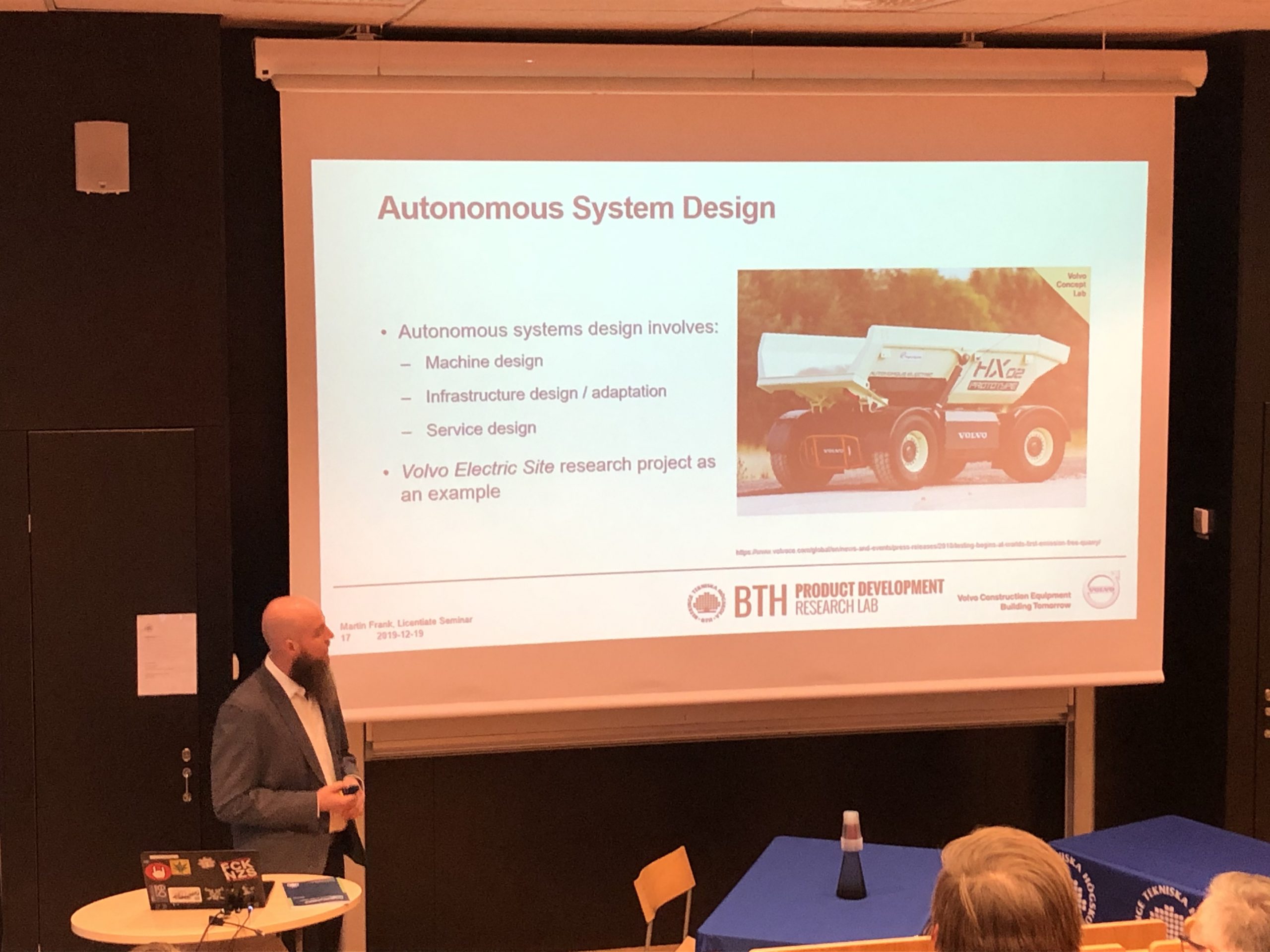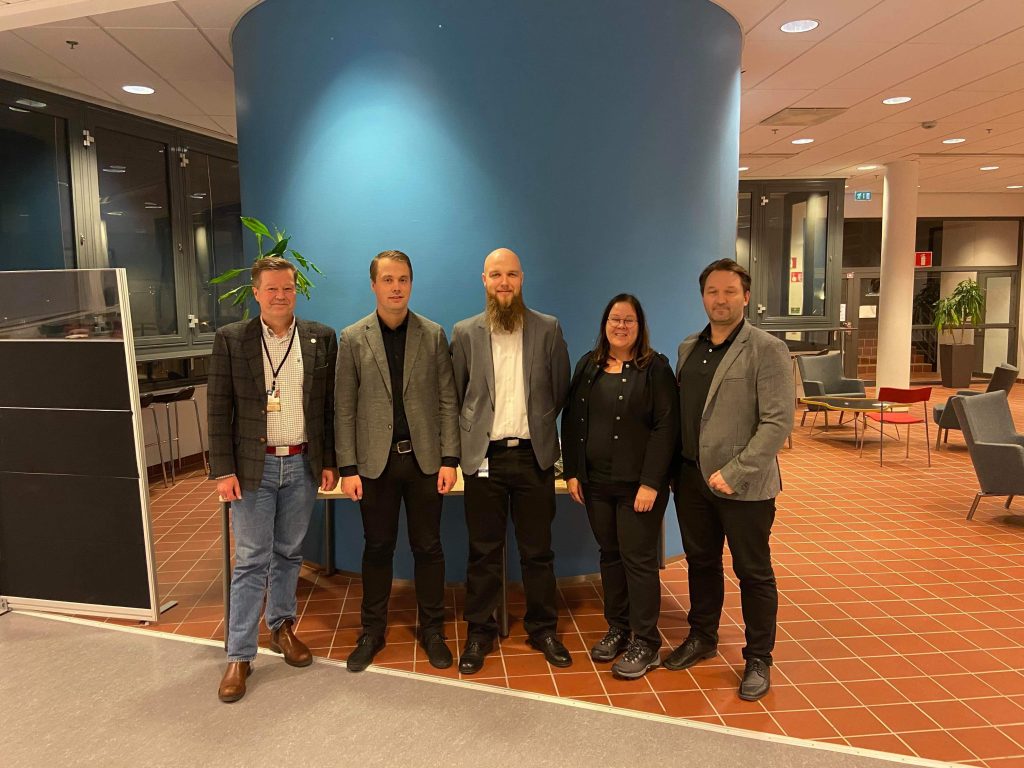
Congratulations Martin Frank, Licentiate in Mechanical Engineering!
- Post by: Tobias Larsson
- 20th December 2019
- No Comment
Martin Frank presented his licentiate thesis entitled “A Step Towards the Design of Collaborative Autonomous Machines: A Study on Construction and Mining Equipment” in front of an interested audience both present, and via online, on thursday afternoon.
Martin presented the context and motivation for his research and then took the audience through research methodology and findings (thesis consists of a summary part and three individual research publications) and then landed in a summary of his findings.

Opponent for the day was the researcher Professor Åsa Ericson of Luleå University of Technology. Åsa went went deeper into details to enlighten and enrich the knowledge around the material and in order to get a sense of how Martin had approached the research and also on how conclusion where made.
At the end also the audience had the chance to ask questions on the research.
Examiner Professor Tobias Larsson then concluded by declaring that Martin had passed the exam and achieved the licentiate degree.
Besides the examiner the supervisors of Martin has been Assistant Professor Christian Johansson Askling.
Thesis abstract
Fully autonomous construction and mining machines are not science fiction anymore. For special applications, these types of machinery are well known for several years. The construction and mining industries are ripe for innovative product and service offers, including automated and fully autonomous machines at a larger scale. Nevertheless, commercially available autonomous machines for the main markets are still rare. Driven by the advancements in sensor technology, increased connectivity, and on-board computational capabilities, automation of machine functions and subsystems led to the development of advanced operator-assistant functions in certain fields like material handling, predictive maintenance, and operator guidance. Semi-automated machines, supporting the machine operator during normal operation, are well accepted by users and customers and show beneficial effects on the productivity of the machine and the overall work process. The purpose of this thesis is to generate a deeper understanding of the specific requirements needed to support the design decisions during the development of fully autonomous machines. Complementary, deeper insights into the efficient collaboration between autonomous machines and human collaborators are explored.
The thesis summarizes the research performed by the author, as an industrial Ph.D. student and Specialist for Intelligent Machines at Volvo Construction Equipment. Performed research comprises the investigation of the state-of-the-art approaches in the automation of machines and dedicated functions with special emphasis on the connectivity of the different systems and components up to the site management solution. Further, the work includes the exploration of data-mining through early experience prototyping as a step towards data-driven design of a product-service system. In additional the research covered the support of on-site collaboration between autonomous machines and humans by investigating team behavior and trust development among humans.
Conclusions from this work are that autonomous machine design requires new sets of requirements to support early decision making during the development process. Dedicated data collection based on different methods such as, data-mining, needfinding, and observations, supported by multiple physical and virtual artifacts can generate useful data to support the decision-making. Trust between humans and machines, and the preconditions of developing this trust need to be captured as specific requirements. To support further development in the area of autonomous machine design, an interaction model had been proposed to map possible interactions of an autonomous machine with objects and collaborators within the same work area. To capture the different nature of the possible interactions, several levels had been introduced to enable the distinction between cognitive, and physical, as well as intended, and unintended interactions.
Keywords: Engineering Design, Systems Engineering, Autonomous Machines, Human- Machine Collaboration, Human-Machine Trust, Interaction Model, Construction, Mining
